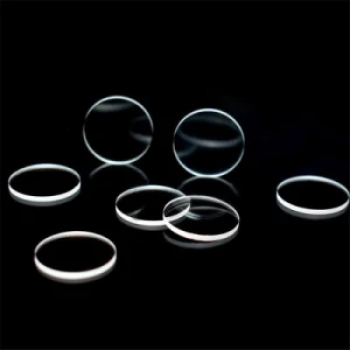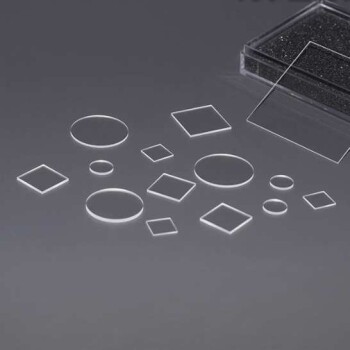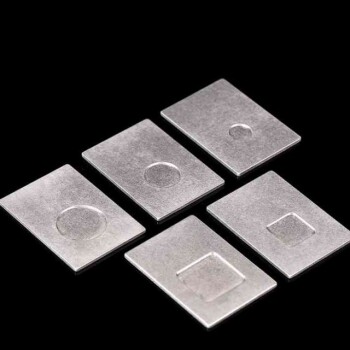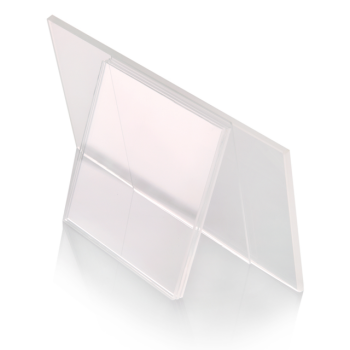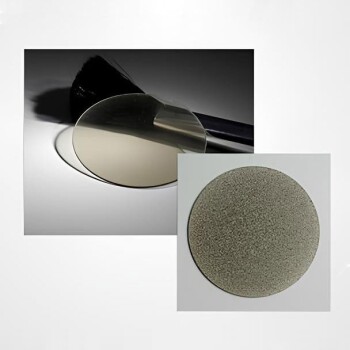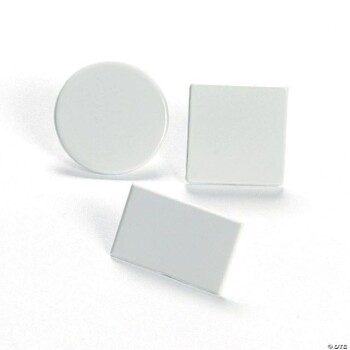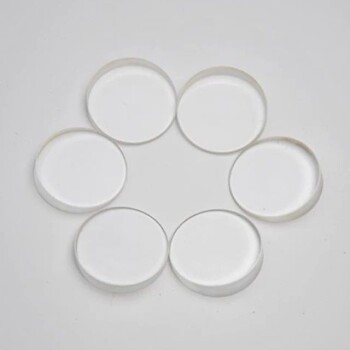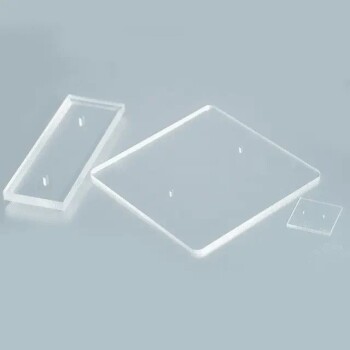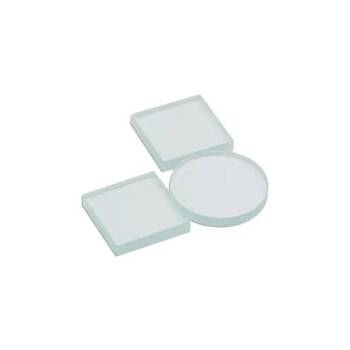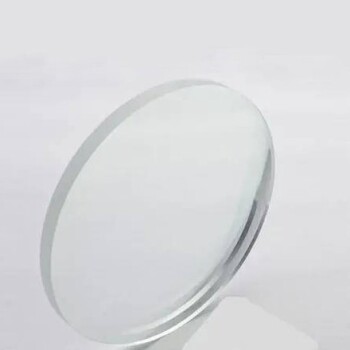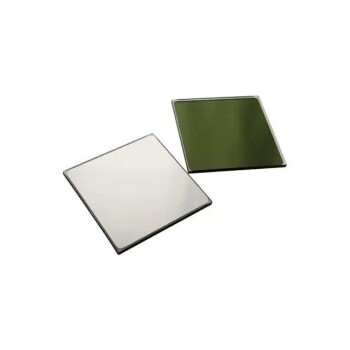溶融シリカの紹介
定義と組成
酸化ケイ素の一種である溶融シリカは、そのアモルファス構造と高純度によって際立っています。原子が規則正しく配列している結晶性の石英とは異なり、溶融シリカは非結晶性、つまり原子がランダムに無秩序に配列しています。このユニークな構造が、その卓越した特性の主な原因です。
溶融シリカはほぼ純粋な二酸化ケイ素(SiO₂)で構成され、微量の不純物は通常50ppm以下です。この高い純度は、その優れた熱的、光学的、機械的特性にとって極めて重要です。大きな不純物がないため、溶融シリカは幅広い温度と環境下で安定性を維持することができ、様々なハイテク用途で好まれる材料となっています。
溶融シリカの製造工程では、高純度の石英や天然の珪砂を、通常摂氏1,700度から2,000度程度の非常に高い温度で溶かします。この溶融プロセスにより、結晶構造が除去され、ガラス状の均質な材料となる。溶融後、材料は急速に冷却され、アモルファス状態を保持し、最終製品がそのユニークな特性を保持することを保証する。
まとめると、溶融シリカの組成と製造工程は、その物理的・化学的特性を定義するだけでなく、先端技術用途におけるその多様性と重要性を強調している。
従来のガラスとの違い
溶融シリカが従来のガラスと一線を画すのは、その純度と付加的な成分を含まないことが主な理由です。特定の特性を高めたり、製造工程を容易にするために様々な添加物を含むことが多い従来のガラスとは異なり、溶融シリカはほぼ完全に二酸化ケイ素(SiO₂)でできています。この高い純度が、優れた熱的・光学的特性の基礎となっています。
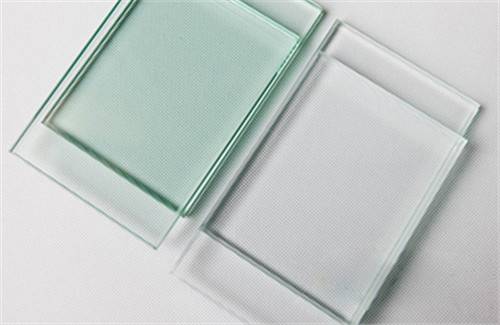
熱特性の面では、溶融シリカは非常に低い熱膨張係数を誇り、温度変化に対してほとんど膨張・収縮しません。そのため、極低温から高熱まで幅広い温度範囲で高い安定性を発揮します。一方、従来のガラスは一般的に熱膨張係数が高く、過酷な条件下では熱応力を受けやすく、破損の可能性があります。
光学的には、フューズドシリカは紫外線(UV)、可視光線、赤外線(IR)スペクトルの透明性で有名です。この幅広い透明性は、光を散乱または吸収する不純物を含まない高純度の直接の結果です。従来のガラスは、たとえ高品質の光学ガラスであっても、特定の波長、特に紫外および赤外域の透過性を制限する元素を含んでいることが多い。
以下の表は、石英ガラスと従来のガラスとの主な違いを示しています:
| 特性 | 溶融シリカ | 従来のガラス |
|---|---|---|
| 組成 | ほぼSiO₂のみ | 各種添加剤を含む |
| 熱膨張係数 | 非常に低い | 高い |
| 透明度 | UVからIRまで幅広い | 添加剤による制限 |
| 耐薬品性 | 高い耐性 | 組成により異なる |
| 電気絶縁性 | 優れた | 可変 |
これらの特徴から、溶融シリカは、航空宇宙、半導体、光学産業など、高い熱安定性と広範な光学的透明性を必要とする用途に理想的な材料です。
溶融シリカの特性
化学的特性
溶融シリカは、その卓越した化学的不活性と高純度により、幅広い化学薬品に対する優れた耐性を持つことで知られています。この特性は、実験室、工業環境、ハイテク製造工程など、化学物質への暴露が避けられない環境では特に重要です。その一般的な耐性にもかかわらず、溶融シリカはすべての物質に対して不浸透性ではありません。水酸化カリウムやフッ化水素酸には顕著な影響を受けやすく、長期間の暴露により構造的完全性が損なわれる可能性があります。
溶融シリカの耐薬品性を他の材料と比較した表を以下に示します:
| 化学物質 | 溶融シリカの耐性 | 従来のガラスの耐性 |
|---|---|---|
| 水酸化カリウム | 影響を受けやすい | 影響を受けやすい |
| フッ化水素酸 | 可溶性 | 可 |
| 硫酸 | 耐性 | 耐性 |
| 塩酸 | 耐性 | 耐性 |
| 水酸化ナトリウム | 耐性 | 耐性 |
この比較分析により、溶融シリカのユニークな化学的堅牢性が強調され、化学的安定性が最優先される用途では好ましい材料であることがわかります。しかし、特定の化学物質に対しては脆弱であるため、これらの物質が蔓延している状況では、慎重な取り扱いと適切な保護措置が必要となります。
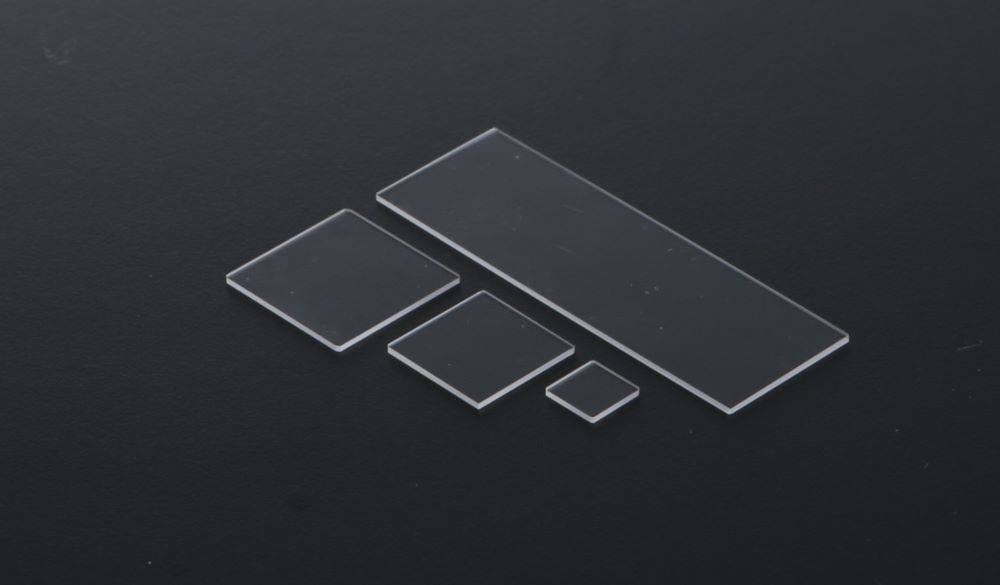
電気的性能
溶融シリカは、非常に高い抵抗値を特徴とする卓越した電気絶縁特性で有名です。この特性は、高周波性能を必要とする用途に特に適しています。さまざまな条件下でも電気絶縁性を維持できるこの素材の特性は、従来の素材が故障する可能性のある環境では極めて重要です。
例えば、電子機器や電気通信の分野では、マイクロ波やミリ波の周波数で動作する部品の製造に石英ガラスが採用されることがよくあります。その高い抵抗は、高周波伝送の完全性と効率を維持するために不可欠な、最小限の信号損失を保証します。
| 特性 | 価値 | 影響 |
|---|---|---|
| 電気絶縁性 | 高抵抗 | 高周波用途での信号損失を最小化 |
| 周波数範囲 | マイクロ波からミリ波まで | 高度な電気通信および電子機器に最適 |
| 安定性 | ストレス下でも絶縁を維持 | 厳しい環境下でも信頼性の高い性能を確保 |
高周波用途での使用に加え、溶融シリカの電気特性は高温環境での適性にも貢献しています。極端な温度に耐えながら電気部品を絶縁するその能力は、航空宇宙や半導体製造などの産業において非常に貴重な材料となっています。
機械的特性
溶融シリカはその卓越した機械的特性で知られており、特にマイクロデバイスの分野では他の材料とは一線を画しています。固有の柔軟性により、クラックを発生させることなく応力や変形に耐えることができるため、耐久性が最も重要な用途に最適です。この柔軟性はその優れた強度によって補完され、溶融シリカはその構造的完全性を損なうことなく、大きな機械的負荷に耐えることができます。
さらに、溶融シリカは圧縮に対して顕著な耐性を示します。この特性は、マイクロ流体デバイスや高応力の機械部品など、材料が高圧にさらされる環境では極めて重要です。柔軟性、強度、耐圧縮性を併せ持つ溶融シリカは、精度と信頼性が要求されるマイクロデバイスの製造に理想的な材料です。
まとめると、溶融シリカの機械的特性である柔軟性、強度、耐圧縮性は、性能と寿命の両方を保証し、幅広いマイクロデバイスの用途に適しています。
光学特性
溶融シリカは、紫外(UV)から赤外(IR)スペクトルにわたる卓越した透明性で知られています。この透明性は、単に程度の問題ではなく、溶融シリカを光学領域において他の材料とは一線を画す基本的な特性です。
溶融シリカの光学的透明性は、異なる波長領域における性能において特に顕著である。例えば、紫外域では160nmまでの光を透過させることができ、紫外レーザーやフォトリソグラフィーのような用途に不可欠です。赤外領域では3.5µmを超える透過率があり、光ファイバー、赤外分光法、赤外線イメージング・システムに不可欠です。

この幅広いスペクトル透過性は、低光分散と高屈折率によって補完され、信号損失と歪みを最小限に抑えます。これらの特性により、石英はレンズ、プリズム、導波路など、精度と効率が最も重要な光学部品にとって理想的な材料となっています。
さらに、溶融シリカの機械的および熱的安定性は、光学用途での使用をさらにサポートします。熱衝撃や機械的ストレスに対する耐性があるため、高温環境や急激な温度変化など、さまざまな条件下でも、石英ガラス製の光学部品はその完全性と性能を維持することができます。
まとめると、広い分光透過率、低分散、高屈折率を特徴とするフューズドシリカの光学特性は、機械的および熱的堅牢性と相まって、高度な光学技術のための最高の材料として位置づけられています。
熱的性能
溶融シリカはその卓越した熱安定性で有名ですが、その主な理由は熱膨張係数が低く安定していることです。この特性により、溶融シリカは極低温から極熱までの広い温度範囲で安定した状態を保ちます。より高い熱膨張係数を持つ材料とは異なり、溶融シリカは様々な温度にさらされても大きな寸法変化や機械的ストレスが発生しないため、熱耐久性を必要とする用途に最適です。
溶融シリカの熱安定性は、その高い熱伝導率と低い耐熱衝撃性によってさらに向上します。これらの特性は、クラックや変形を起こすことなく、急激な温度変化に耐える能力に貢献しています。このため、溶融シリカは、半導体産業や航空宇宙用途のように、性能を損なうことなく極限状態に耐えなければならない高温環境において、優れた選択肢となります。
さらに、溶融シリカの低熱膨張係数は、高度な光学システムや電子部品における精密な熱管理を可能にします。このような用途では、さまざまな熱条件下で寸法の一貫性を保つことが、最適な性能と寿命を確保するために極めて重要です。これらの熱特性の組み合わせにより、溶融シリカは高温で熱に敏感な様々な用途において優れた材料として位置づけられています。
溶融シリカの用途
宇宙探査
溶融シリカは、宇宙探査の分野、特に宇宙船の窓や深海潜水艇の建造に重要な用途を見出しています。その比類ない強度は、これらの環境で遭遇する過酷な条件に耐える理想的な材料です。
宇宙船の窓では、溶融シリカの機械的ストレスや熱衝撃に対する高い耐性が、宇宙ミッション中に経験する莫大な圧力や温度変化の下でも窓の完全性を保証します。この素材は、紫外から赤外スペクトルにわたって透明性を維持する能力があり、歪みのないクリアな観察とデータ収集を可能にし、その有用性をさらに高めています。
同様に、深海潜水船では、溶融シリカの卓越した耐久性が極めて重要です。この素材は、大深度での莫大な静水圧に耐えることができ、船舶の観測窓の安全性と機能性を保証します。この弾力性は、化学腐食に対する耐性によって補完され、過酷な海洋環境を考えると不可欠です。
このような用途に溶融シリカを使用することで、その汎用性と堅牢性が強調され、宇宙や水中探査技術の進歩における礎となる材料となっている。
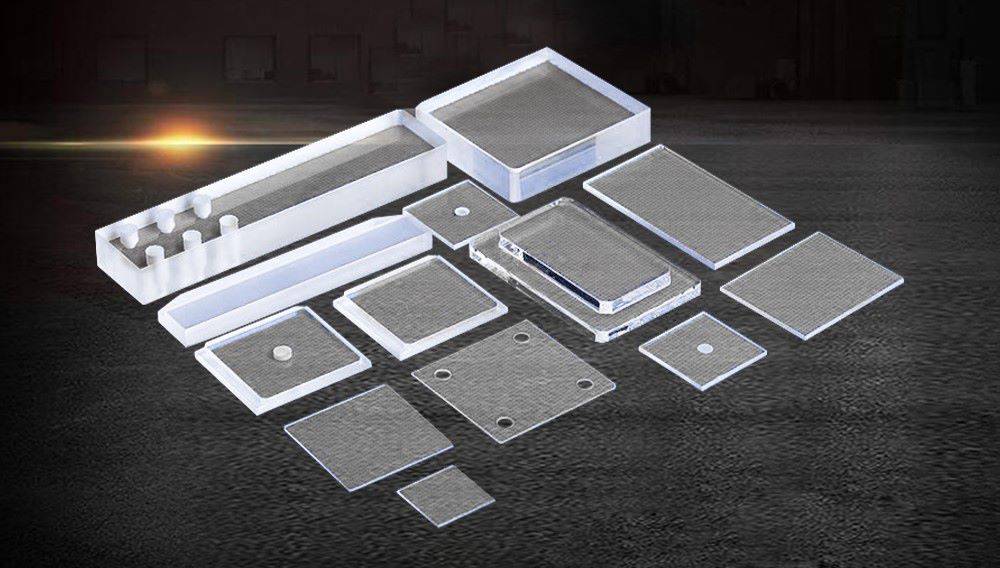
化学・医療用精密ガラス
溶融シリカは、化学的および熱的損傷に非常に強いため、化学および医療分野の精密ガラス器具に理想的な材料です。この材料の化学的不活性は、水酸化カリウムとフッ化水素酸の顕著な例外を除いて、ほとんどの化学薬品に影響されないことを保証します。この特性により、溶融シリカは構造的な完全性を損なうことなく、侵食性の強い化学物質を扱う容器や器具に最適です。
医療分野では、溶融シリカの熱安定性が特に有利です。熱膨張係数が低いため、広い温度範囲で寸法安定性を維持することができ、高温滅菌処理を伴う用途に適しています。この特性は、劣化することなく極端な温度に繰り返しさらされることに耐える必要がある医療器具にとって極めて重要である。
さらに、溶融シリカの高純度と光学的透明性は、医療診断や研究に有益です。例えば、医療機器の精密レンズや光学部品の製造に使用することができ、鮮明で正確なイメージングを実現します。また、紫外から赤外まで光を透過させることができるため、レーザー手術や光干渉断層計など、さまざまな医療用途で重宝されています。
まとめると、耐薬品性、熱安定性、光学特性を併せ持つ石英ガラスは、化学と医療の両分野において、精密ガラス器具の優れた材料として位置づけられています。そのユニークな特性は、機器の耐久性と信頼性を高めるだけでなく、重要な用途における性能と精度の向上にも貢献します。
エレクトロニクスと高温用途
溶融シリカは、その卓越した熱安定性と絶縁特性により、エレクトロニクス産業で広く使用されています。部品が極端な温度にさらされる環境では、溶融シリカは電子機器の寿命と性能を保証する重要な材料として機能します。熱膨張係数が低いため、大きな温度変化の下でも寸法安定性を維持することができ、高温条件下で使用される絶縁部品に最適です。
さらに、溶融シリカの電気絶縁特性は比類のないもので、高周波用途に重要な高抵抗を提供します。そのため、シグナルインテグリティの維持と電気ショートの防止が最重要課題である高度な電子システムの設計に不可欠です。絶縁能力を損なうことなく高温に耐えるこの材料の能力は、こうした用途での有用性をさらに高めている。
まとめると、溶融シリカの熱的・電気的特性のユニークな組み合わせは、エレクトロニクス、特に高温安定性が重要な要件となるシナリオにおいて、溶融シリカを不可欠な材料にしています。溶融シリカの使用は、厳しい環境下での電子部品の信頼性と耐久性を保証し、現代の技術進歩におけるその重要性を際立たせています。
光学およびレーザー技術
溶融シリカは、主にその優れた光学特性により、光学およびレーザー技術の分野で極めて重要な役割を果たしています。紫外線(UV)から赤外線(IR)スペクトルにわたる高い透明性は、様々な光学部品にとって理想的な材料です。この透明性により、信号損失が最小限に抑えられ、高精度の用途で優れた性能を発揮します。
レーザー光学では、レンズ、ミラー、導波路の製造に石英ガラスが使用されます。これらのコンポーネントは、レーザービームのコヒーレンスと効率を維持するために非常に重要です。この材料の低分散特性は、ビーム品質を維持することが最も重要な高出力レーザーシステムへの適性をさらに高めます。
さらに、溶融シリカの機械的および熱的安定性により、レーザー技術でしばしば遭遇する厳しい条件にも耐えることができます。熱膨張係数が低いため、様々な温度下でも光学部品の寸法が安定し、歪みや位置ずれのリスクを低減します。
| 特性 | 光学およびレーザー技術における利点 |
|---|---|
| 高い透明性 | 信号損失を最小限に抑え、性能を向上 |
| 低分散 | 高出力システムにおけるビーム品質の維持 |
| 機械的安定性 | 圧縮に強く、形状を維持 |
| 熱安定性 | 様々な温度下で寸法安定性を確保 |
これらの特性を併せ持つ石英は、高度な光学およびレーザーシステムの開発と運用に不可欠な材料です。
半導体産業
溶融シリカは、その卓越した純度により半導体産業で高く評価されています。溶融シリカの純度は汚染を最小限に抑え、半導体デバイスの信頼性と効率を高めます。この材料は、フォトマスク用基板や化学蒸着リアクターの部品など、半導体製造プロセスにおける様々な重要な用途に使用されています。
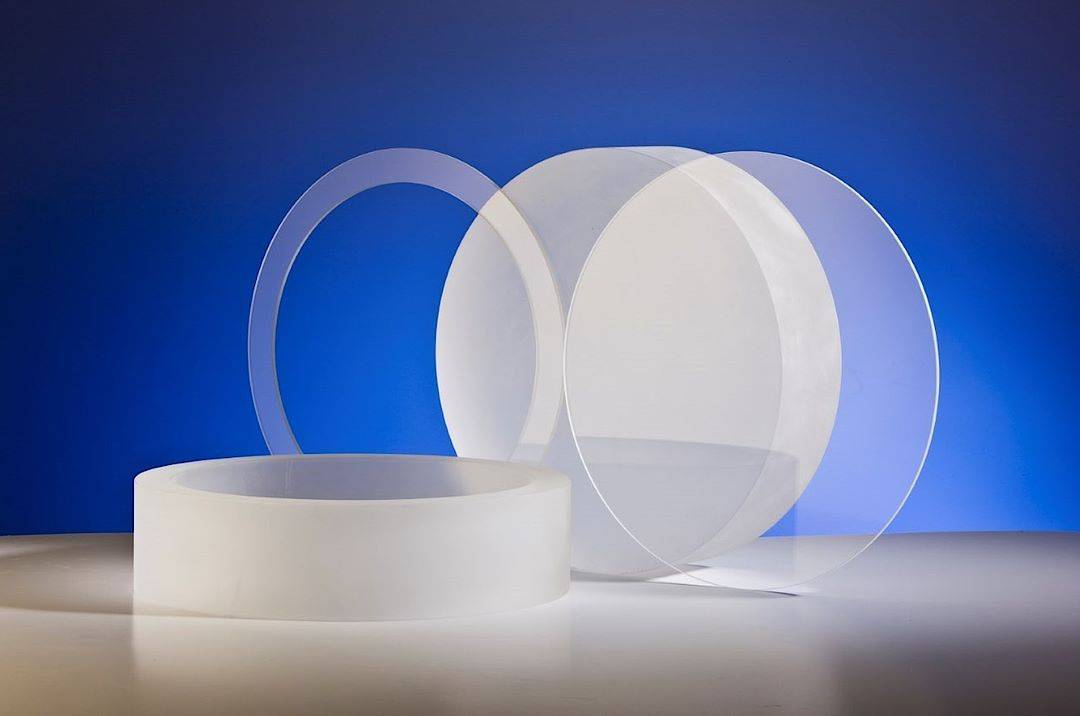
フォトマスクでは、溶融シリカは安定した透明基板として機能し、半導体層の精密なパターニングを可能にします。紫外から赤外にわたる高い透明性は、高解像度のイメージングを必要とする半導体製造の重要なプロセスであるフォトリソグラフィーに特に有利です。さらに、溶融シリカの熱膨張係数が低いため、温度が変化してもマスクの寸法が一定に保たれ、半導体ウェハーに転写されるパターンの精度を維持するのに不可欠です。
さらに、化学気相成長(CVD)リアクターでは、優れた熱安定性と腐食性化学薬品への耐性を持つ溶融シリカが採用されています。これらの特性は、高温プロセスの過酷な条件に耐えることを可能にし、ウェハーや集積回路などの半導体部品の製造に理想的な材料となっている。溶融シリカの化学的不活性、電気絶縁性、機械的強度の組み合わせは、半導体産業において多用途で不可欠な材料となっています。
紫外線衛生
溶融シリカは、主に熱と放射線の両方に対する優れた耐性により、紫外線(UV)衛生装置に広く利用されています。この材料固有の特性により、高温と強い放射線が蔓延する環境では理想的な候補となります。例えば、UV殺菌システムにおいて、溶融シリカのコンポーネントは、劣化することなく厳しい条件に耐えることができ、サニテーションプロセスの長期的な有効性を保証します。
このような過酷な条件下での溶融シリカの耐久性は、そのユニークな化学的・熱的特性の直接的な結果です。従来の材料とは異なり、溶融シリカはUV用途で一般的な問題である熱ストレスや放射線による損傷を受けません。そのため、材料の完全性が無菌状態を維持する上で最も重要な、重要な衛生用途において信頼性が高く持続可能な選択肢となります。
さらに、溶融シリカのUVスペクトル全体にわたる透明性は、UV衛生におけるその有用性をさらに高めます。この透明性により、滅菌プロセスにとって重要な紫外線を効率的に透過させることができます。その結果、UV機器に使用される溶融シリカのコンポーネントは、過酷な使用条件に耐えるだけでなく、衛生システムの全体的な効率と有効性にも貢献します。
関連製品
- 耐高温光学石英玻璃板
- 赤外線透過コーティング サファイア基板 ウィンドウ
- 多様な研究用途に対応するカスタマイズ可能なXRDサンプルホルダー
- 光学窓ガラス基板ウェーハ石英プレート JGS1 JGS2 JGS3
- ラボ用途向けCVDダイヤモンド光学窓

